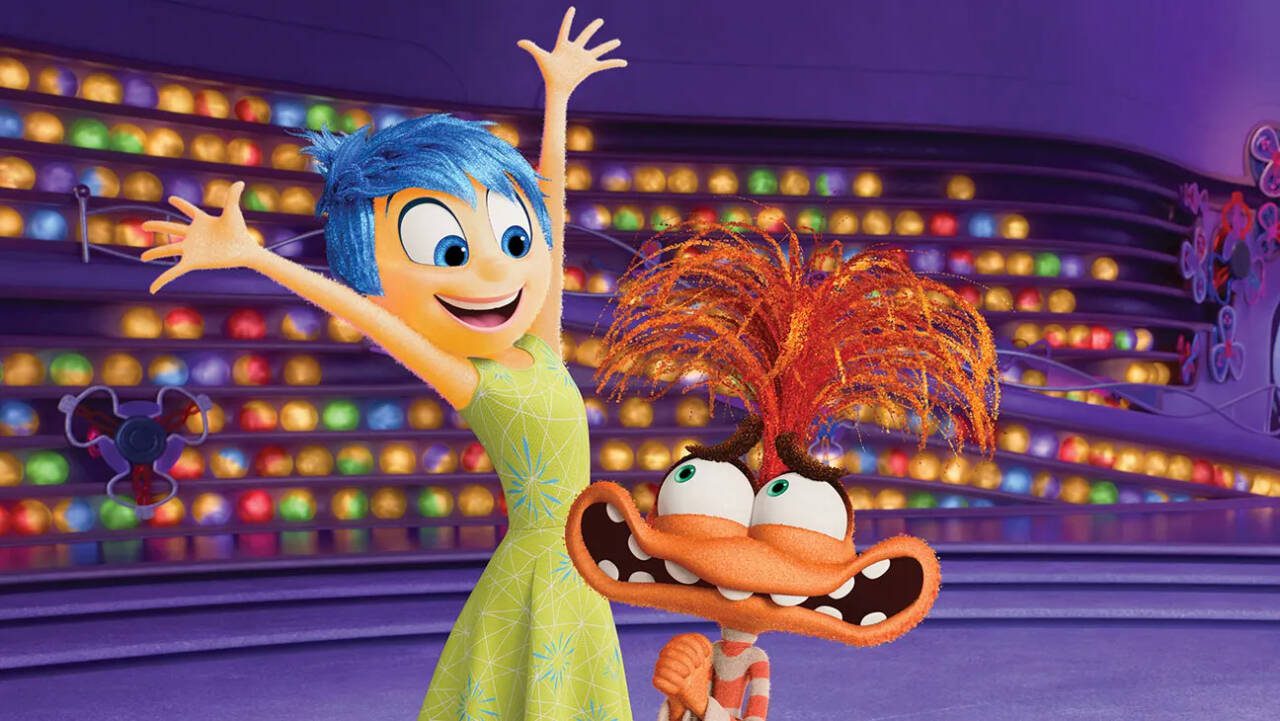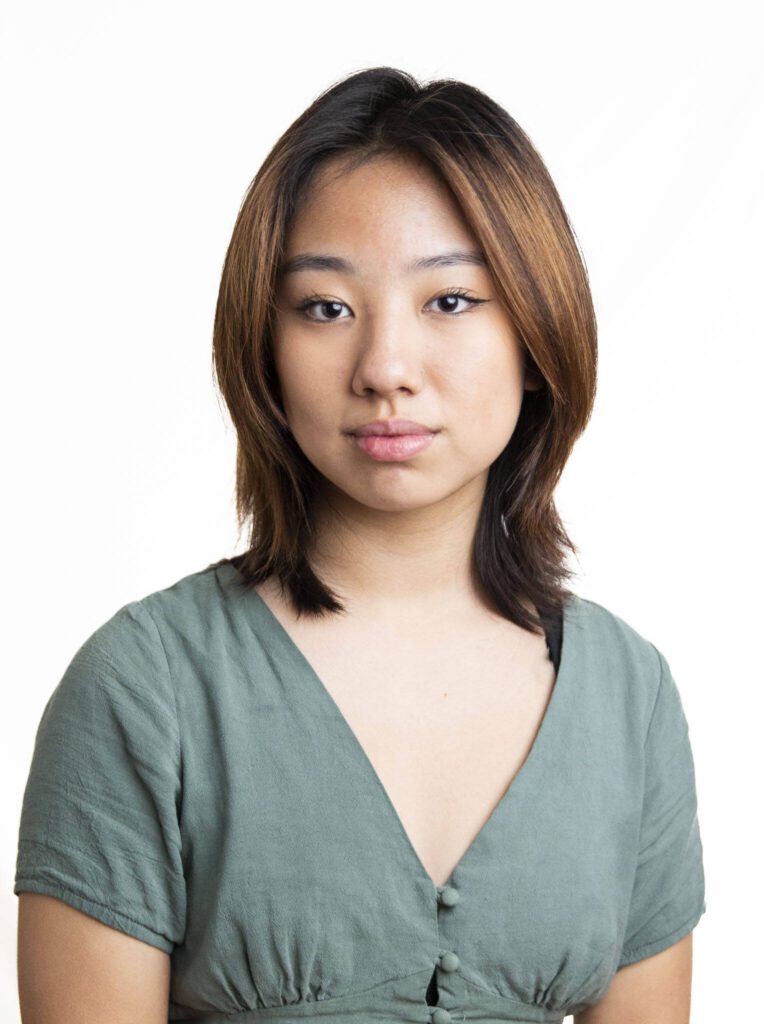This article contains spoilers for “Inside Out 2.”
When I first saw Pixar’s “Inside Out” at 6, I found a piece of myself in Riley, the girl whose emotions literally play out in the movie. Nine years later, I’m 15 and once again crying in the movie theater watching “Inside Out 2.”
The first movie centers around Riley, a hockey-loving 11-year-old who navigates life after moving from Minnesota to San Francisco. Her emotions Joy, Sadness, Fear, Anger and Disgust, attempt to guide her during this life change.
Now, Riley and I have both grown. She’s off to hockey camp, and I’ve been thrown head-first into high school, about to become an upper-classman, and writing for the Everett Herald. One thing we both have in common? We’re both dealing with a new cast of emotions: Anxiety, Envy, Ennui, and Embarrassment.
The night before camp, a puberty alarm goes off in the headquarters of Riley’s brain and a construction crew barges in to reconstruct Riley’s emotion console. Joy, headquarters’s former leader, is greeted by four new emotions. Anxiety, a wiry framed emotion with disheveled orange hair, bulging eyes and an uncanny grin, emerges as headquarters’s breakout star.
During the car ride to hockey camp, Riley learns that Bree and Grace, her two best friends, will be attending different high schools. Joy’s main focus is to enjoy time with Riley’s friends, while Anxiety fixates on winning a spot on the team and making new friends in the absence of Bree and Grace. Throughout the movie, Anxiety separates Riley from her core sense of self.
“If a little kid watched ‘Inside Out 2’ they would see Anxiety as the bad guy,” Erin, an incoming sophomore at Kamiak high school, told me. “Anxiety can still be a bad person, but it’s just a part of life. That’s why some people don’t see anxiety as the villain, because she’s doing it to make Riley better.”
Despite being portrayed as the antagonist behind Riley’s suffering, I saw Anxiety as an emotion who just wanted the best for Riley.
As outlandish and far-fetched as Anxiety’s predictions of the future seemed, I and other teens have had similar thoughts.
Vividly, I remember my mom sitting me down, breaking the news that we’d be moving — again. Three different elementary schools, two different middle schools, and a brand new high school. My joy wanted me to cherish my remaining time with my friends, but my anxiety gnawed at the fringes of my brain.
The idea of sitting alone at lunch for four years straight, the fear of being hated and judged by everyone, and the irrational idea that everyone is constantly looking at you, is terrifying and draining.
However, this shift in self and social-awareness can be positive. Without my anxiety, I wouldn’t be driven to finish my homework, or perform well on my driver’s test.
It’s Anxiety that forces Riley to wake up early to practice for her hockey camp, and Anxiety that pushes her to score three goals in the final scrimmage. Without Anxiety, Riley likely wouldn’t have made the Firehawks team.
Drive, without a little fear, is nothing but empty ambitions. My love and obsession for writing would be nothing, without a little fear to motivate me to constantly improve, to wake up early and hit my daily word count. However, drive with too much fear becomes toxic and debilitating.
“Anxiety can actually fall under the umbrella of fear,” said a Mukilteo School District psychologist. “The definition of anxiety itself is a fear or worry of the unknown, in a sense, anxiety is a fear.”
Anxiety introduces herself as an emotion that’s “protecting Riley from the things she can’t see.” We can’t villainize Anxiety for doing what she thought was best for Riley, even if her actions were misguided.
In a twisted sense, Anxiety was right. Riley’s best course of action was to not fool around during camp, and make new friends.
Most people make mistakes, in an effort to fit in, or obtain some sort of external goal. I know I’ve been in Riley’s position. Sitting in my own metaphorical penalty box, in a moment where I believed the world was ending.
Yet it never does. Life goes on, and things get better.
Despite the challenges, our teenage years are a time where we can find our sense of self and place in the world.
For Riley, this meant accepting that she wasn’t perfect. Sometimes she needs help, sometimes she is a bad friend, and sometimes she gets scared. For me, that meant accepting that I too am not perfect. And that’s normal.
“People were changing themselves,” said Erin, in regards to her and her classmates’ transition from middle school to high school. “They were cutting their hair, or dyeing their hair, going by different pronouns. And I was starting to explore that aspect of me, and I found a lot about my friends, myself and I feel like I went through a lot of personality change.”
The very idea of change can be difficult, but it’s inevitable. Often, there isn’t anything we can do to stop change, but it isn’t always something you should want to stop. Most people don’t want to accept the less appealing parts of themselves, but it’s through that acceptance that we grow.
You cease being a person when you’re perfect, and the many facets of Riley, even the unpleasant ones, are beautiful. They are wholly, and unequivocally her. And if Riley’s headquarters can accept every aspect of her, then maybe we can too.
Any questions or suggestions for The Teen Beat? Email kate.erickson@heraldnet.com and include “The Teen Beat” in the subject line. Emails will be monitored and screened by an adult.
Talk to us
> Give us your news tips.
> Send us a letter to the editor.
> More Herald contact information.

























